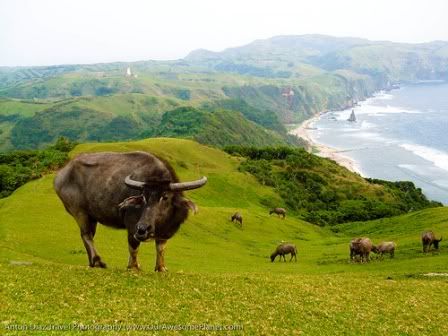BASCO, Batanes October 24 -- The local committee for Batanes World Heritage, the office of the Congressman and the Batanes Heritage Foundation Inc. conducted a seminar workshop on the management and conservation of world heritage sites last October 21 to 23.
The seminar workshop aimed to teach the stakeholders how to manage and conserve their cultural heritage. It was a three-day seminar-workshop which was attended by stakeholders, namely, national government agencies, non-government organizations, local government units and the academe.
Speaker-lecturer Dr. Florentino Hornedo said not all stakeholders understand their heritage and its significance, making it incompatible for some stakeholders to manage and conserve their heritage.
Hornedo, the only Ivatan commissioner to the UNESCO, said the workshop leads to the island-province’s pursuit of World Heritage sites nomination.
Hornedo said UNESCO appreciates universal values but, recognizes only the outstanding universal values for enlistment to the heritage Sites.
Hornedo also taught the participants how to preserve their museum. He said it should contain the best cared, preserved, properly arranged and labeled artifacts or masterpieces of the Ivatan culture. He also challenged all schools to keep an organized museum.
“The living treasure system is recognizing, appreciating and encouraging Ivatan master artists such the best tataya maker, the master craftsman, the laji (folk lore singer) the best vakul weaver and basket weavers,” Hornedo told the participants.
“The skills manifested in the product is a representative of the living treasure or artisan who is the maker/producer and the promotion and support by making the stakeholders aware of the cultural tradition are very important to be able to pass it on to the younger generation," Hornedo said.
The 4 C’s in heritage namely culture, community commerce and creative arts were comprehensively discussed. The stakeholders are likewise challenged to reach the people and to orient the younger generation to be more creative using the indigenous materials into marketable products.
The best vakul maker of the province, Isleta Fuego of Sabtang, was also recognized. Vakul is a native woman’s farming headgear used as a protection from heat and rain.(Batanes Islands)
The seminar workshop aimed to teach the stakeholders how to manage and conserve their cultural heritage. It was a three-day seminar-workshop which was attended by stakeholders, namely, national government agencies, non-government organizations, local government units and the academe.
Speaker-lecturer Dr. Florentino Hornedo said not all stakeholders understand their heritage and its significance, making it incompatible for some stakeholders to manage and conserve their heritage.
Hornedo, the only Ivatan commissioner to the UNESCO, said the workshop leads to the island-province’s pursuit of World Heritage sites nomination.
Hornedo said UNESCO appreciates universal values but, recognizes only the outstanding universal values for enlistment to the heritage Sites.
Hornedo also taught the participants how to preserve their museum. He said it should contain the best cared, preserved, properly arranged and labeled artifacts or masterpieces of the Ivatan culture. He also challenged all schools to keep an organized museum.
“The living treasure system is recognizing, appreciating and encouraging Ivatan master artists such the best tataya maker, the master craftsman, the laji (folk lore singer) the best vakul weaver and basket weavers,” Hornedo told the participants.
“The skills manifested in the product is a representative of the living treasure or artisan who is the maker/producer and the promotion and support by making the stakeholders aware of the cultural tradition are very important to be able to pass it on to the younger generation," Hornedo said.
The 4 C’s in heritage namely culture, community commerce and creative arts were comprehensively discussed. The stakeholders are likewise challenged to reach the people and to orient the younger generation to be more creative using the indigenous materials into marketable products.
The best vakul maker of the province, Isleta Fuego of Sabtang, was also recognized. Vakul is a native woman’s farming headgear used as a protection from heat and rain.(Batanes Islands)


















